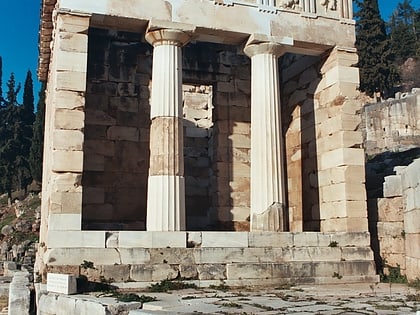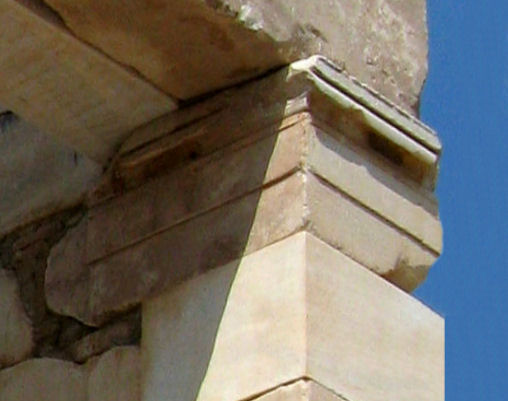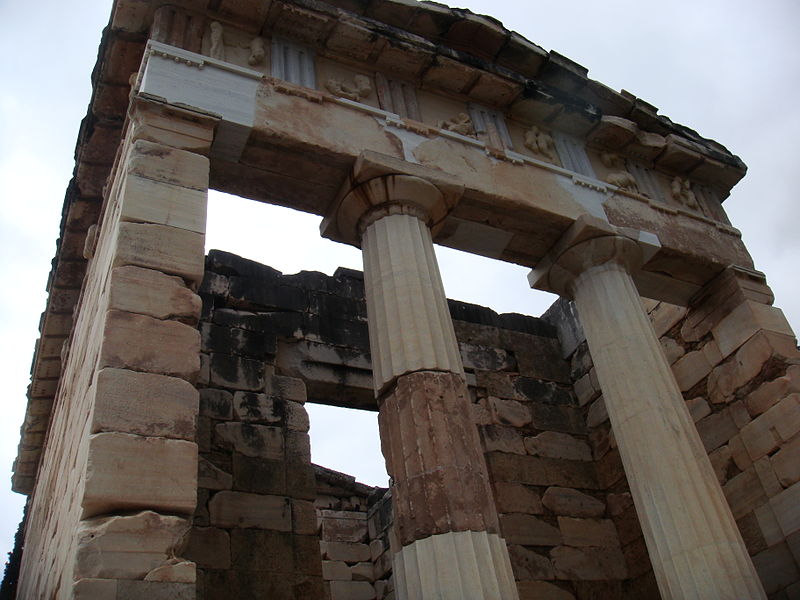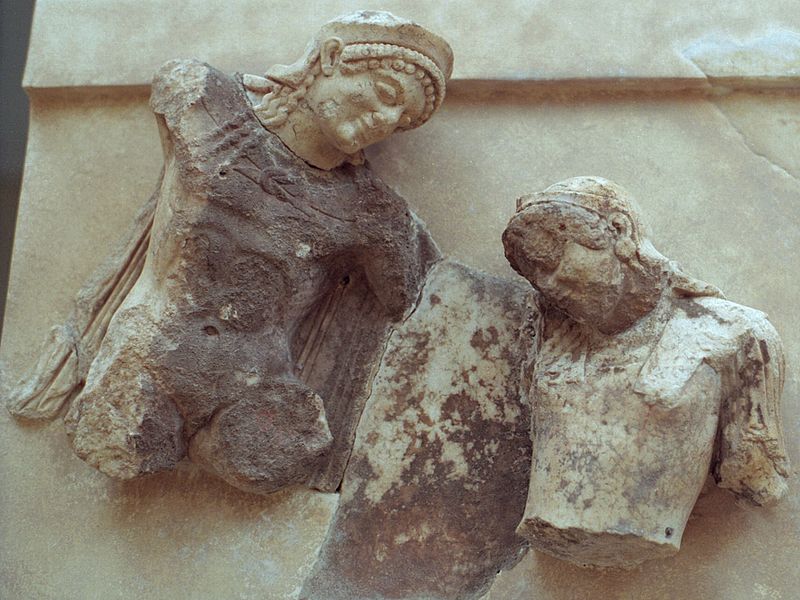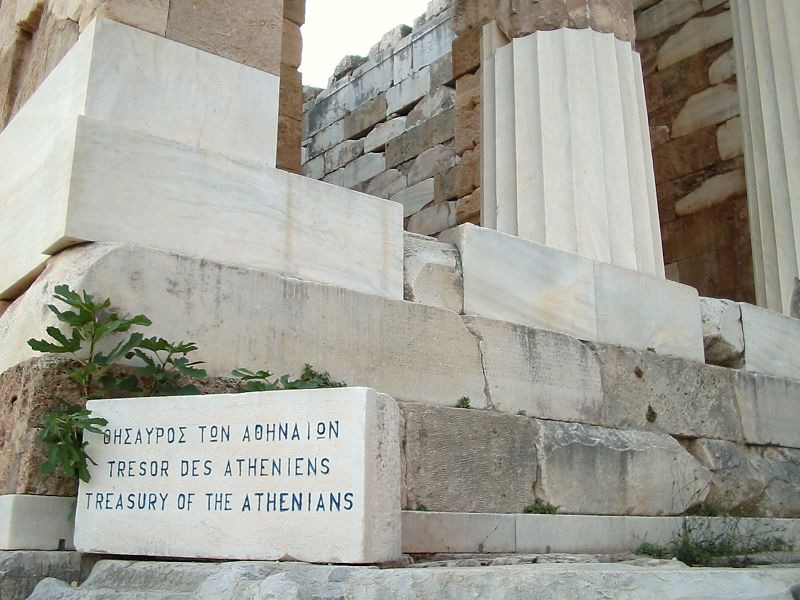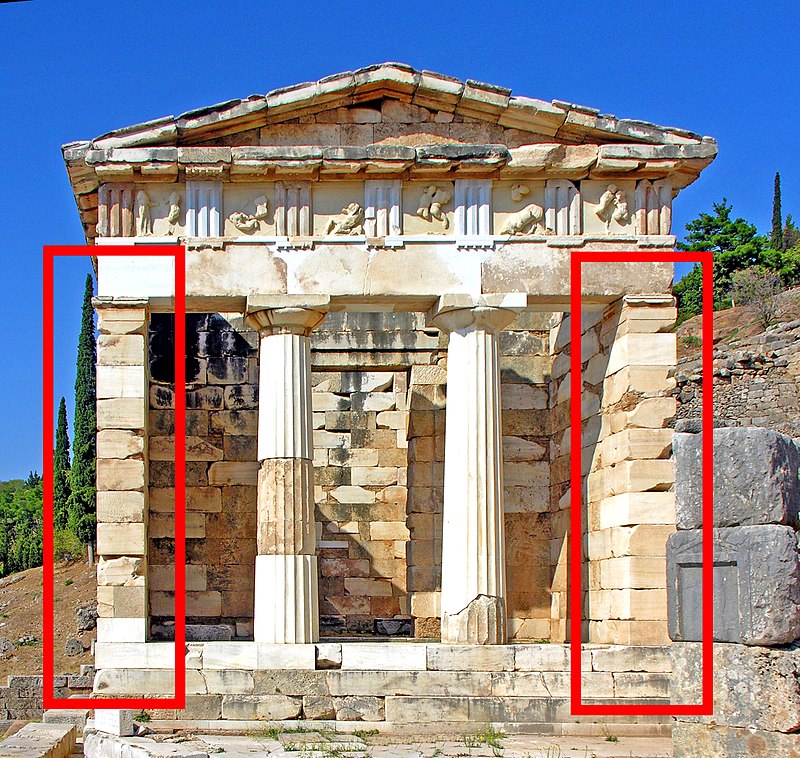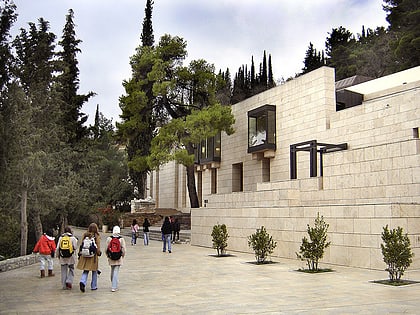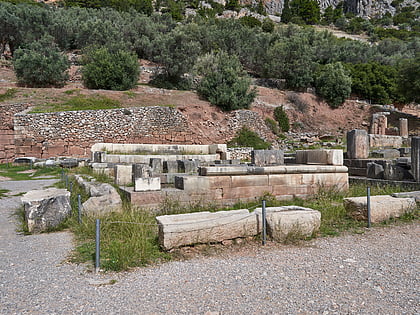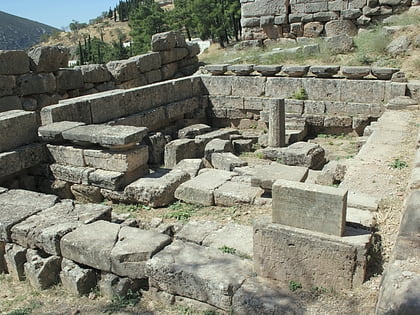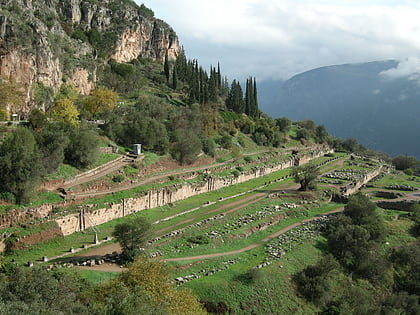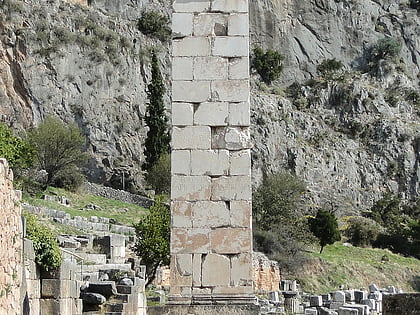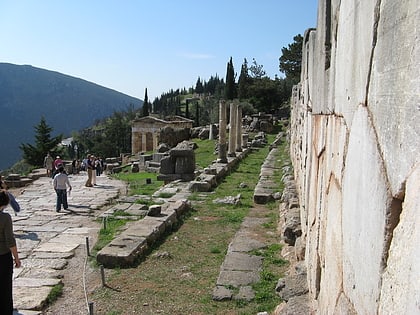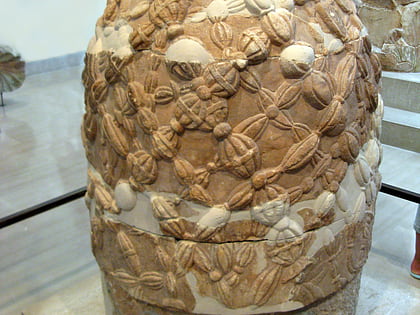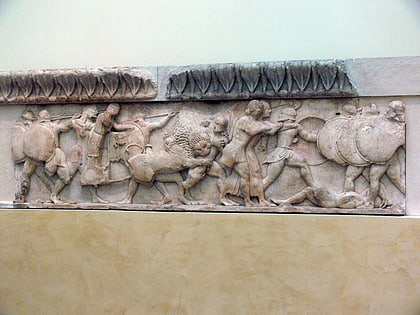Athenian Treasury, Delphi
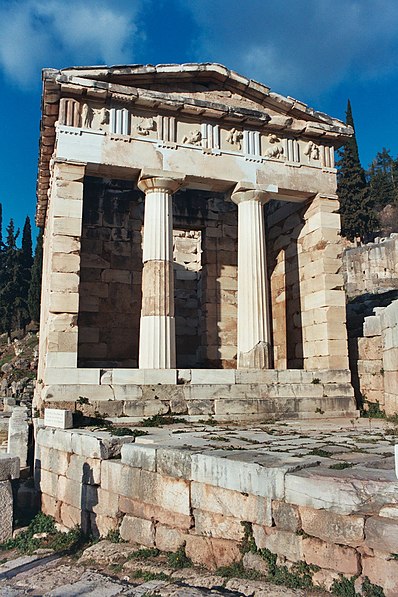
Facts and practical information
Nestled within the sacred precincts of Delphi, the Athenian Treasury stands as a testament to the architectural prowess and the cultural significance of ancient Greece. This classical edifice, constructed in the early 5th century BCE, served as a storeroom for the offerings and tributes made by the city-state of Athens to the sanctuary of Apollo.
The Athenian Treasury is a fine example of Doric design, characterized by its sturdy columns and metopes, some of which depict the exploits of Heracles and Theseus, adding to the narrative of Greek mythology and heroism. These metopes are a significant source of information about Greek sculpture and art of the period, as they illustrate the high level of craftsmanship achieved by Athenian sculptors.
Built entirely of Parian marble, the structure was erected after the Battle of Marathon as a token of gratitude for Athenian victories. It symbolizes the power and wealth of Athens during its Golden Age and stands as a monument to the city's piety and dedication to the gods.
Today, the Athenian Treasury is an integral part of the archaeological site of Delphi, one of the most important and visited sites in Greece. Delphi itself was considered the center of the world in ancient Greek religion and played host to the famous Oracle, where pilgrims and leaders sought divine counsel.
For modern visitors, the Athenian Treasury provides a tangible connection to the ancient world, offering an opportunity to walk in the footsteps of pilgrims who traveled from far and wide to consult the Oracle and pay homage to Apollo. As part of the Delphi archaeological complex, the Treasury is open to the public, allowing history enthusiasts and tourists alike to appreciate its historical significance and architectural beauty.
Delphi
Athenian Treasury – popular in the area (distance from the attraction)
Nearby attractions include: Delphi Archaeological Museum, Treasury of the Massaliots, Sicyonian Treasury, Palaestra at Delphi.
